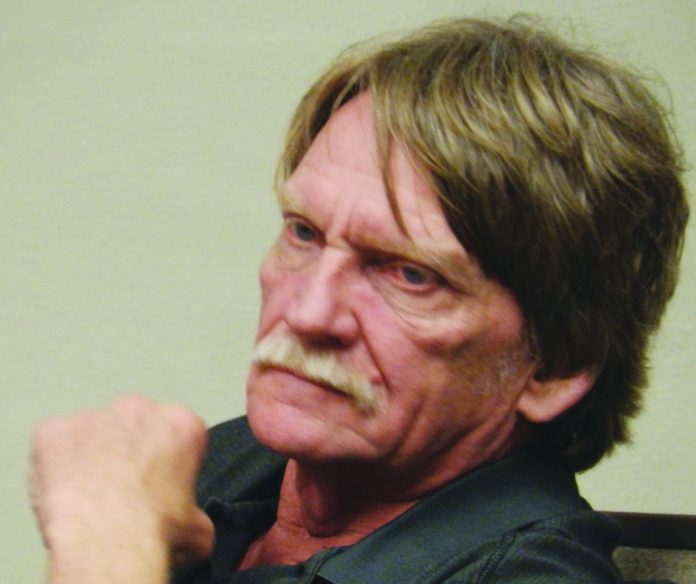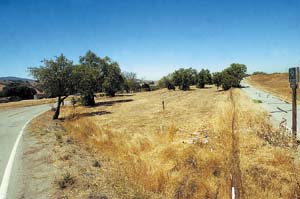
Some Hollister council members Monday showed interest in a concept for treating the odor-ridden industrial sewer pond that involves natural plants and bacteria instead of aerators currently used. But officials had further questions on the idea and wanted to see a cost comparison before moving forward.
Council members Monday heard a report about a proposal from Mokelumne Hill-based Floating Islands West, LLC. The company’s process uses plant-based floating islands employing organic bacteria to consume organic materials. Its proposal contends the process would cost less while saving energy compared with the aerators and more traditional sludge removal.
Mayor Ignacio Velazquez, a proponent of the idea, contended the industrial pond costs about $800,000 annually including energy costs, while the wetland idea would cost $15,000 annually. The San Benito Foods tomato cannery that uses the pond would pay for most of the upgrades, according to officials. San Benito Foods pumps 2 million to 2.5 million gallons of water into the pond during its canning season starting in July.
Removal of sludge byproduct at the industrial treatment plant also became a debated topic and something that appeared to alarm city officials. Since the city doesn’t have a routine sludge removal process, there is an immense buildup of the material in the industrial pond. That buildup, along with extraordinary evaporation of the pond in 2014, prompted the severe odor issues in Hollister last summer, officials reported Monday. According to the presentation made Monday, the Floating Islands’ wetland could remove seven feet of sludge in three years. Officials have estimated there are seven to eight feet of sludge across the pond, enough so that it was above water levels about 30 to 40 feet out last summer.
Council members heard a presentation at Monday’s special study session, but the consideration on wastewater treatment was not an action item. They directed staff officials to return with the comparison of costs between the traditional and alternative forms of sewer treatment at the industrial pond.
Among the five council members, Mayor Ignacio Velazquez and Councilman Ray Friend showed support for exploring the proposal. Council members Victor Gomez, Karson Klauer and Mickie Luna all said they had more questions on it.
One reason for the request on costs is that there were significant discrepancies with numbers presented—ranging from $1 million to $5 million—regarding estimates to remove current sludge from the industrial pond.
Overall, city officials expressed frustration about a lack of sludge removal historically at the pond.
“We have done a very poor job of maintaining our sludge levels,” City Manager Bill Avera said.
Outside of removing the current sludge, officials were focused on a long-term treatment option. The mayor and Councilman Ray Friend expressed outright support for the proposal, while the three other council members had hesitation to move ahead so soon. City staff officials reported back that they met with representatives from the regional water quality control board, which appears open to the wetland approach.
Despite the fact that the consideration was on a study session agenda and was not an action item, Councilman Victor Gomez said he felt pressured to approve the Floating Islands project right away.
“I really don’t feel comfortable being pressured to make a decision tonight,” Gomez said. “To be put in this friggen situation tonight and to say, ‘Hey, you guys are pretty much stupid if you don’t vote yes or you’re going to stink up the whole town,’ is not the right approach.”
Gomez broached the idea of using a public bid process instead of just looking at the one company’s idea for alternative treatments.
“I don’t know if I would feel comfortable without going through a public, transparent process,” Gomez said.
Velazquez sought a middle-ground approach as well and suggested city officials approve partially moving ahead on the new treatment by introducing the bacteria to the pond to see if there is any progress by the time the regional water board may finish a permit review—which takes 146 days in this case.
A representative from Veolia Environment, which operates the industrial pond, countered the notion of testing the new treatment for a few months to gauge initial progress. He said with that much sludge in the industrial pond, there wouldn’t be any noticeable progress in such a short time. That representative, Jim Heitzman, is the general manager of the Hollister pond.
Heitzman told council members if the city changes the treatment process, he would have to check back with corporate on changing the current contract moving forward, though he did indicate Veolia is a “risk-averse” company.
“We’re very happy to be part of the Hollister family,” he said.








